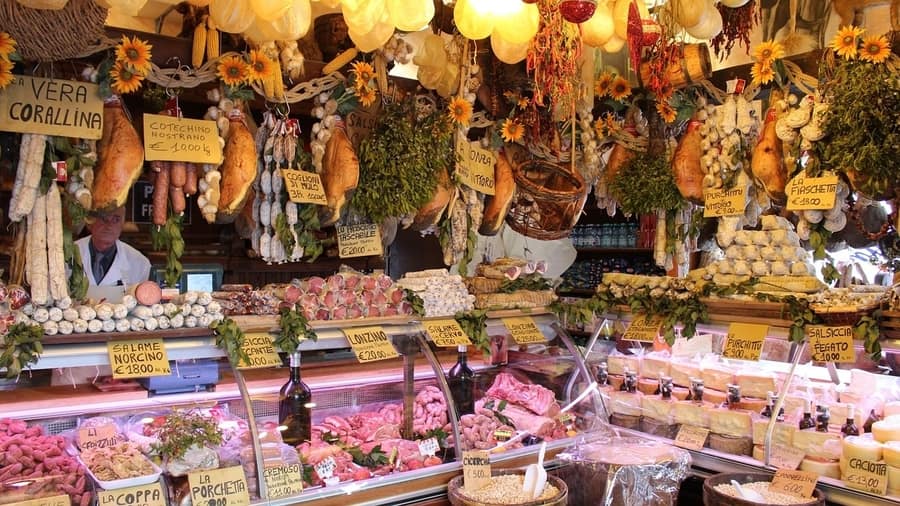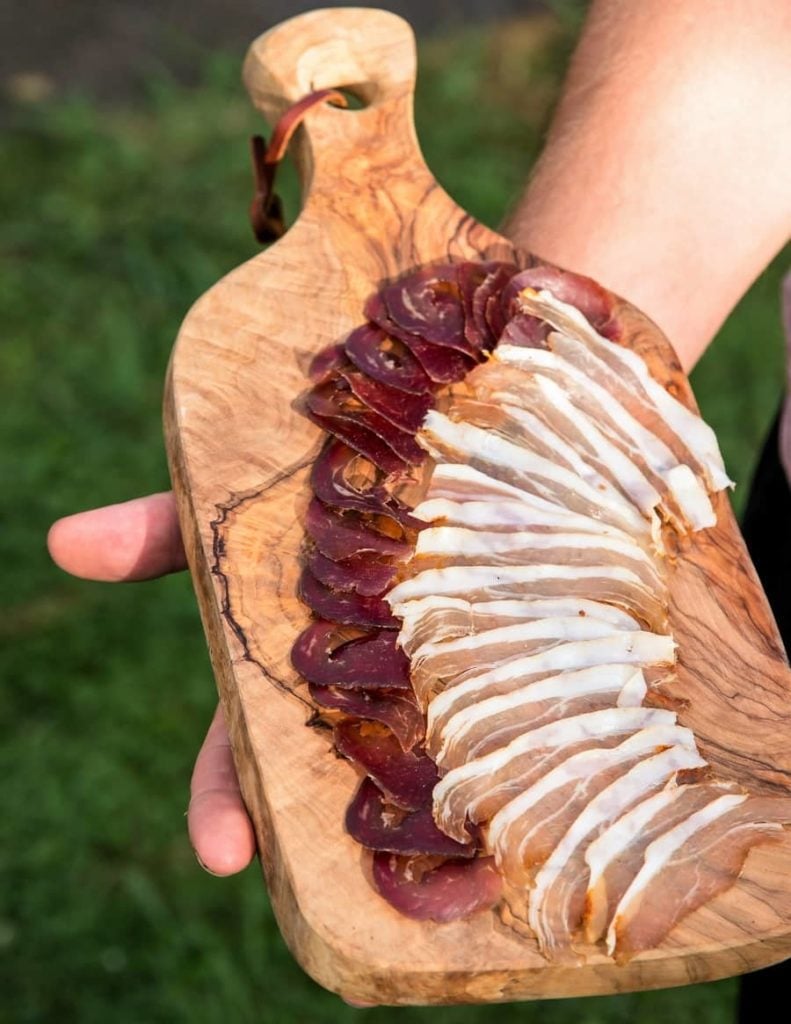When it comes to charcuterie in all its forms and cured meats most of it I’ve come across is generally gluten-free, however that’s with writing bit more detail about this.
Quality charcuterie such as dry-cured meats & salami, rillettes, and confit are unlikely to contain gluten. Budget cost-effective supermarket deli meats such as bier sticks and emulsified processed spam/bologna meat may be likely to contain gluten.
Many people aren’t aware of the ‘fillers’ that are used in quite a lot of charcuterie products, sometimes for good effect. But sometimes, they do help ‘fill’ the product to make it more profitable. I will dive into what I know about the fillers, flour, and starches he used in certain products.
If you’re after the easiest answer, read the ingredients; they will tell you whether it does or doesn’t. But to help, I will elaborate on what I know and make to give some more context.
I have always been keen on reading the ingredients of my products, either from the supermarket or the local market.
As someone who makes a lot of their own cured and smoked meats, I will discuss charcuterie and what I’ve seen to give people a bit more insight into it (but there will be HUGE generalizations).

So I want to have a good handle on what is in the products I buy at the supermarket.
Now I’m not saying every supermarket is bad and there are some great products out there. But the bottom line is the supermarket and the mass-produced products that generally sells are very much based on profit and hardly ever based on passion (fillers can help make more money, and there are sometimes gluten-based since gluten products are often cheap).
There are exceptions especially if you look at cultures like Italy or France where food culture is the cornerstone of society (might be why people go on food holidays to these countries). When in Italy check out the junk food area of supermarkets, the months of travel I have spent there – always highlighted a lack of chips and fizzy pop).
Read the Ingredients, this will be the best practice to work out whether It has ingredients that are gluten free or not.
Charcuterie – Wide Interpretation
Charcuterie has a modern wide interpretation since so many restaurants serve “charcuterie boards platters”.
Generally they include a few cured meats like dry cured salami (here is how to store cured meat I wrote to help) or prosciutto.
Maybe some chutneys, pickles, olives, humus, cheeses and of course said types of crackers and breads.
Sometimes, other preserved vegetables with oil or pickled vinegar types. Rillettes and pates sometimes make their way into this category as well.
It’s a general example, but it seems the most common unless you make your boards.
Cured Meats (Cheap Fillers vs Quality)
Flour & Starches
Straight from a sausage/salami website, here is a quote:
Flours and starches make great fillers, water absorbers, and binders. Flours such as corn, potato, wheat, soy, and rice are in common use in the Western world.
Meats & Sausages (Sausages & Salamis)
The guys behind this website Maranski and Maranski are some of the experts of salami and sausage making (at home and commercially in Europe) possibly in the world. These guys have written numerous books about the subject, which of course some I own. Incredibly technical and scientific.
If you’fd broadly saying charcuterie includes fresh sausages, then a lot of these would use binders and absorbing gluten-based flour as part of the recipe.
Also things like spam and baloney as much as I don’t like to think of these as cured meats they are and they are likely.
But sometimes potato starch is also used, which is gluten-free, so again, this is to read the back of the label.
Charcuterie & Cured Meats
Charcuterie =Rillettes, Pates, Confit
Rillette is pulled pork cooked in rendered fat and then put in a jar. It is a classic French interpretation of charcuterie (is all charcuterie raw? I wrote about this here) and can be made with all sorts of meats, like rabbit, pork, or even shrimp.
Pates are often based around the liver offal of an animal, these sometimes contain flour or breadcrumbs as a binder as well so it is one to keep our eye out for.
The classic duck confit is similar to a rillette, salt-cured duck slow-cooked in fat and then stored in a jar. But I haven’t seen any confit has gluten-based ingredient added to it.
Fresh Sausages (in France these are considered ‘charcuterie’)
As mentioned above sausages that are fresh and not salt-cured and dried. Meat ingredients, especially from a supermarket will have binding agents that are often gluten as well (breadcrumbs or flour).
When I make sausages at home, I don’t actually use any binding agents.
Dry Cured Meats (Part of Charcuterie) = Pancetta, Prosciutto, Dry Cured Salami
What most of this website is about, is dry cured meats (here is an article about what cured meats need to be in the fridge). These are whole muscle pieces of meat that are salt cured with spices. Once these are cured they are then dried to a point where they are preserved and safe to cut wafer-thin and consumed.

Dry-cured salami and artesian salami are similar in all classic ways; however, some salamis have an acidic fermentation stage. Cheeky factory fast food producers use this acid-based effect to cure the product faster and get it on the shelf longer (and it lasts longer on the shelf).
Classic dry cured salami does generally take one to four months to make.
You can make it at home with a small cut of whole muscle meat, I wrote an entire blog post on doing it in a regular kitchen fridge here.
Dry Cured Meats I Make That Do Not Have Gluten
- Dry Cured Salami
- Hot Smoked (also if your interested I wrote about whether cured meats are keto) Salami
- Dry Cured and Smoked Salmon (hot or cold)
- Hot Smoked fish pates
- Pancetta
- Braesola
- Smoked Wild Turkey
- Smoked Duck
Everything above does not contain any gluten; I know for sure!
Gluten
The Big 3: Wheat, Barley, Rye
(wheatberries, durum, emmer, semolina, spelt, farina, farro, graham, KAMUT® khorasan wheat and einkorn), rye, barley and triticale)
As Per (Celiac Foundation)
What Charcuterie is likely to Contain Gluten on a Charcuterie Board
- Cheap Deli Meat maybe pates, some deli sliced meats.
- Cheap Fresh Sausages
- Wheat-based crackers & bread
Please note that this is all about opinion, and it’s really hard to generalize since the site’s audience comes from all over the world!

Tom Mueller
For decades, immersed in studying, working, learning, and teaching the craft of meat curing, sharing the passion and showcasing the world of charcuterie and smoked meat. Read More
